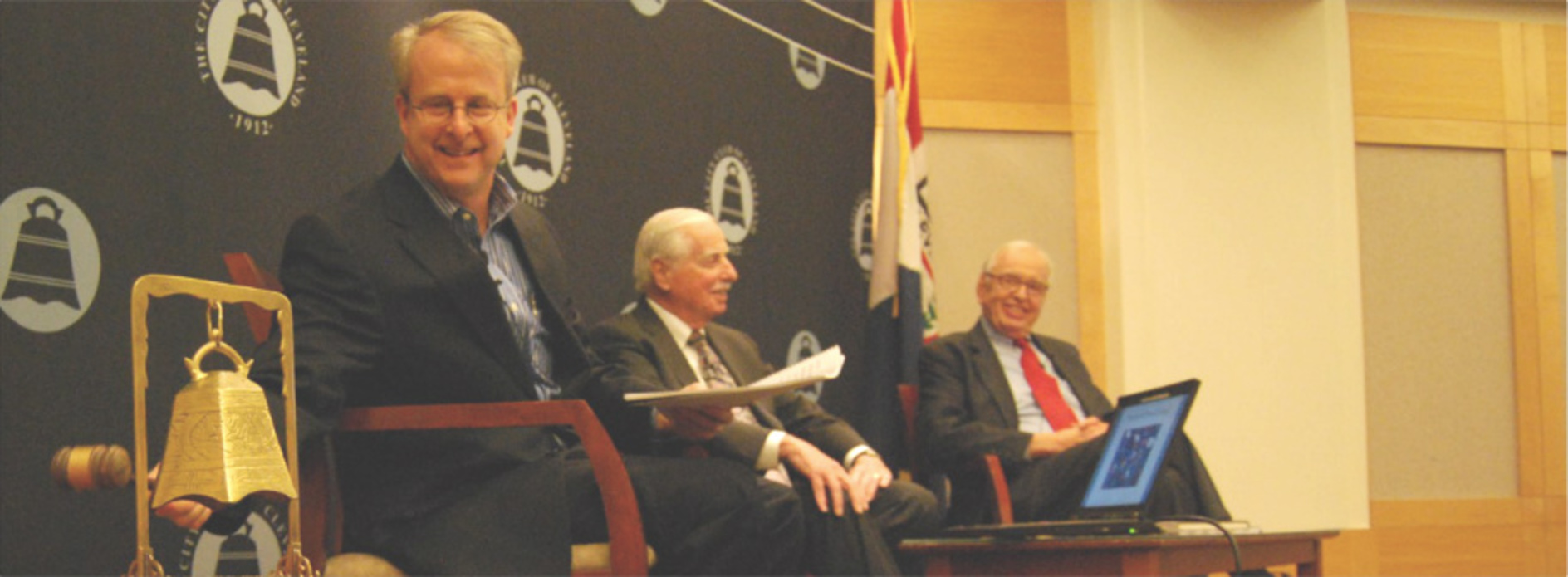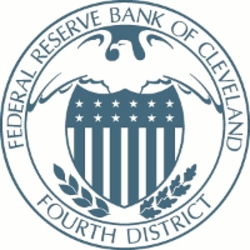Wednesday, July 01, 2015
January 1973 and June 2015: Months that Changed America
After the events of the last few weeks, including landmark decisions from the Supreme Court and a historic act of racial violence, we were wondering just how significant a month June 2015 has turned out to be. With that in mind, we reached out to local historian Jim Robenalt, whose new book about a certain month in the early 1970s has received some attention lately. The book is called January 1973: Watergate, Roe v. Wade, Vietnam, and the Month that Changed America Forever.
We asked him, in a head to head showdown of earth-shaking, world-changing months, which one wins—January 1973 or June 2015? (By the way, Robenalt will speak to the City Club in November.)
After Selma, Lyndon B. Johnson’s speechwriter, Richard Goodwin (later married to Doris Kearns Goodwin), wrote the following line to start LBJ’s special address to Congress, in which he would ask for what would become the Voting Rights Act of 1965: “At times history and fate meet at a single time in a single place to shape a turning point in man’s unending search for freedom.”
Truer words were never spoken. There are times in history when everything seems to happen at once, and a great turning point is reached. Selma was one such event. I suspect this past June has been a similar such time.
In my book just released, January 1973, Watergate, Roe v. Wade, Vietnam, and the Month That Changed America Forever (www.january1973.com), I argue that the month of January 1973 was a dramatic turning point, though unrecognized at the time.
Harry Truman died (the end of the New Deal), the Watergate burglars trial took place (the start of the end of the Nixon presidency), Nixon delivered a game-changing second inaugural (start of the Reagan Revolution), Nixon and Kissinger ended America’s involvement in the Vietnam War with the Paris Peace Accords, the Supreme Court decided Roe v. Wade, and Lyndon B. Johnson died (symbolic end to the Civil Rights movement and the Great Society).
Obviously June 2015 will be seen as a watershed. Perhaps Civil Rights will again rise like a Phoenix after Charleston, and certainly the Supreme Court’s rulings on same-sex marriage will lead to greater acceptance and tolerance of all our brothers and sisters—perhaps. Unlike January 1973, we don’t have almost a half a century to make those sorts of judgments with any certainty.
What we do know, which is not always the case, is that we are living in a time of great contingency—simultaneity I call it: a time when big things seem to be happening all at once, and a sudden breakthrough happens or seems possible. The contingent moment arises and a new path is taken, one that could easily have been a different path.
With January 1973, the breakthrough was actually a backlash. Nixon’s counterrevolution was a reaction to the chaos of the 1960s, resulting mainly from the disruptions caused by the Civil Rights movement and the upheaval of the Vietnam War. The “Silent Majority” rose up, according to Nixon, and called for a return to order. Nixon’s second inaugural address played to this “new majority.” He called for self-reliance. Mocking John F. Kennedy, he said: “In our own lives, let each of us ask—not just what government will do for me, but what can I do for myself.”
The “me generation” was born. Poverty became someone else’s problem. The government would help those who helped themselves. Out with the New Deal and the Great Society, in with the new arrangement that would coalesce in the Reagan years. The rich would grow richer, the poor poorer. And the political parties realigned—the South in particular transformed almost overnight from the solidly Democratic South to the solidly Republican South.
When Roe v. Wade was decided two days after Nixon’s second inaugural (the same day LBJ died in Texas), this Nixon counterrevolution gained an issue that would supercharge things by adding an element of religion to the public debate. Political opponents became evil, not just wrong-headed. “No compromise” found its way into our political bloodstream. We live with this dysfunction today. Evangelicals to “Teavangelicals.”
So without doubt January 1973 was a huge turning point. Will the same be true of June 2015?
Of course only time will tell. But I would venture some guesses. Roe is still an issue 40 years on. Just this past month, the 5th Circuit Court of Appeals upheld a 2013 Texas statute that imposes substantial limitations on access to abortion in that state (remember State Senator Wendy Davis, who filibustered this bill, wearing pink tennis shoes?). Texas admitted that only seven of the state’s 40 abortion clinics will remain open because of the bill. It is a complex question as to whether this case will be the next big test in the Supreme Court on abortion. (See an analysis I did for John Dean on a legal website Justia last week.)
But my observation is that Roe is still an issue because there are two interests involved—the fundamental right of a woman to choose and the life or potential life of the fetus. That makes this debate exponentially more complicated than same-sex marriage. In Roe, the question is when does a fetus’s right become “compelling” such that a state can forbid an abortion. The answer is still “viability” but the analysis is much more nuanced since 1992 when the Supreme Court decided Casey (out of Pennsylvania). That case held that Roe’s viability standard should be affirmed but it otherwise gutted Roe—finding that the state could regulate the who, where and how of abortions, even on behalf of the life or potential life of a fetus from the time of conception on—so long as the regulation was not an “undue burden” on a woman’s right to abort a nonviable fetus.
That ruling in 1992 all these years later is the basis for the 5th Circuit’s opinion upholding the Texas restrictions.
So the abortion controversy will continue.
Conservatives believe that abortion should have been left to state legislatures. Some, like Justice Scalia, believe that the issue became a much bigger problem when the Court took the question out of the hands of the states and let the Supreme Court decide it. As you may know by now, Justice Scalia said exactly the same thing about same-sex marriages. The states, he argued, were moving in that direction and should have been left alone to work this out in a democratic fashion.
Again, I am not here to take one side or the other, but I think that same-sex marriage will be accepted in the same fashion that school integration has been accepted. I doubt we will be arguing about it 40 years from now. I may be wrong.
So June 2015 could be that turning point that everyone points to decades from now. It may very well be the start of greater recognition of LGBT rights—and there are many battles to come. But I think there is no question that this is a time of simultaneity—and one we can recognize as we live through it.
Robenalt is a partner at Thompson Hine LLP and the author of three books, including The Harding Affair and January 1973.






